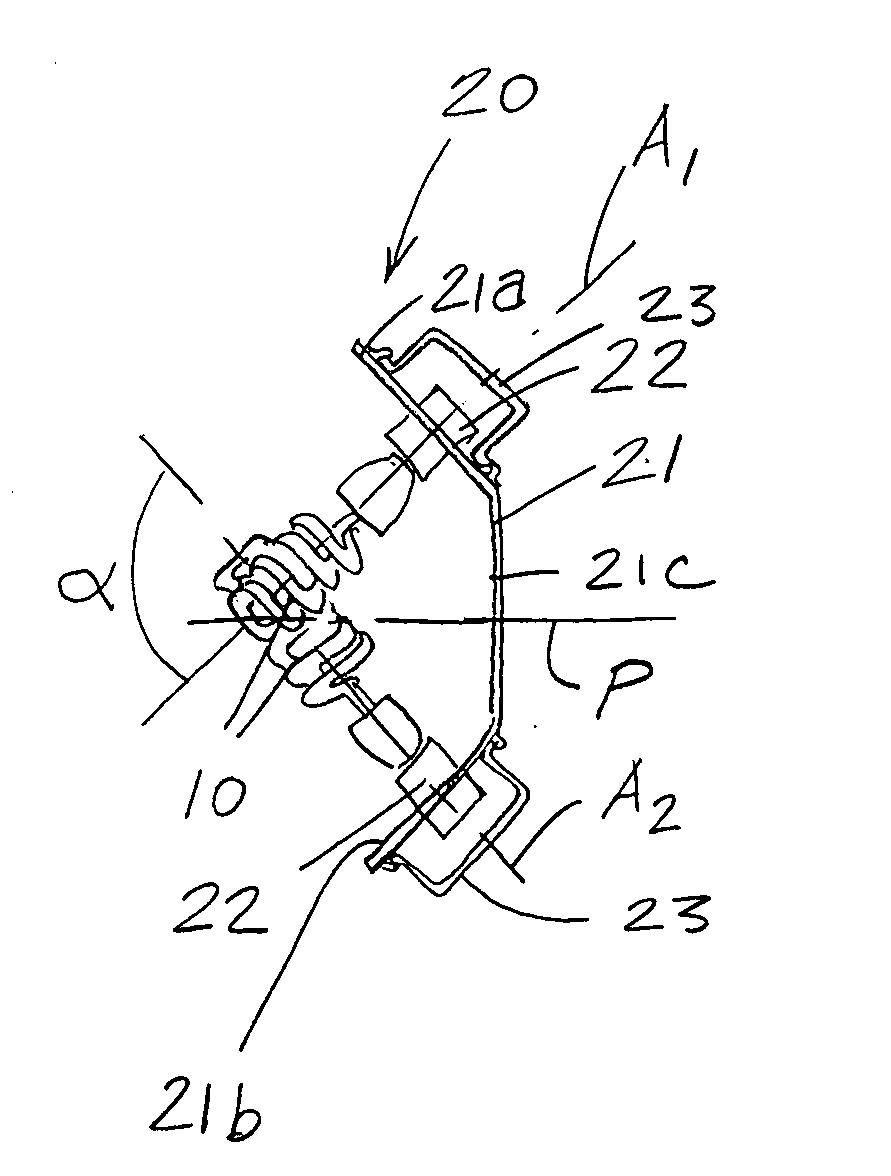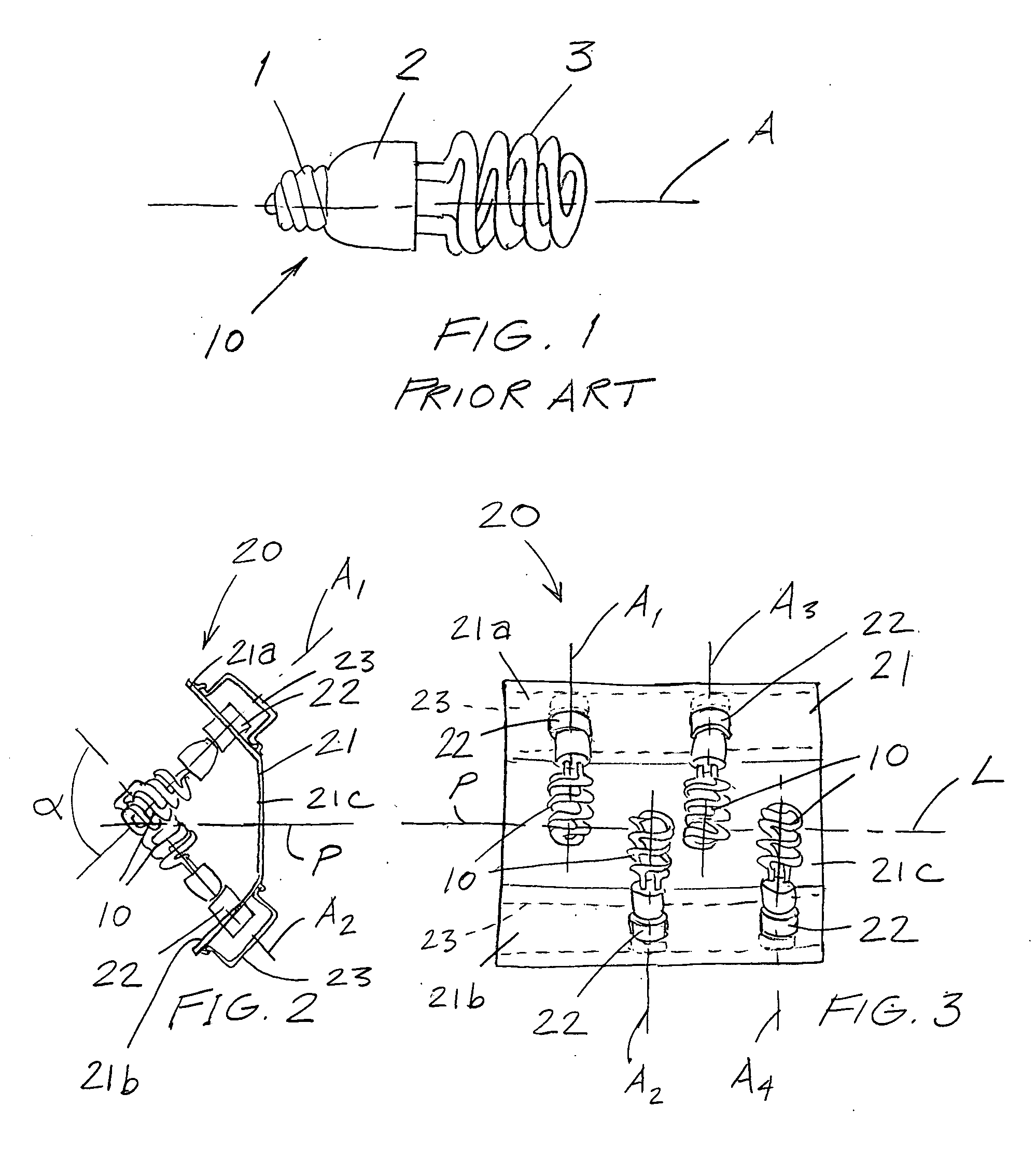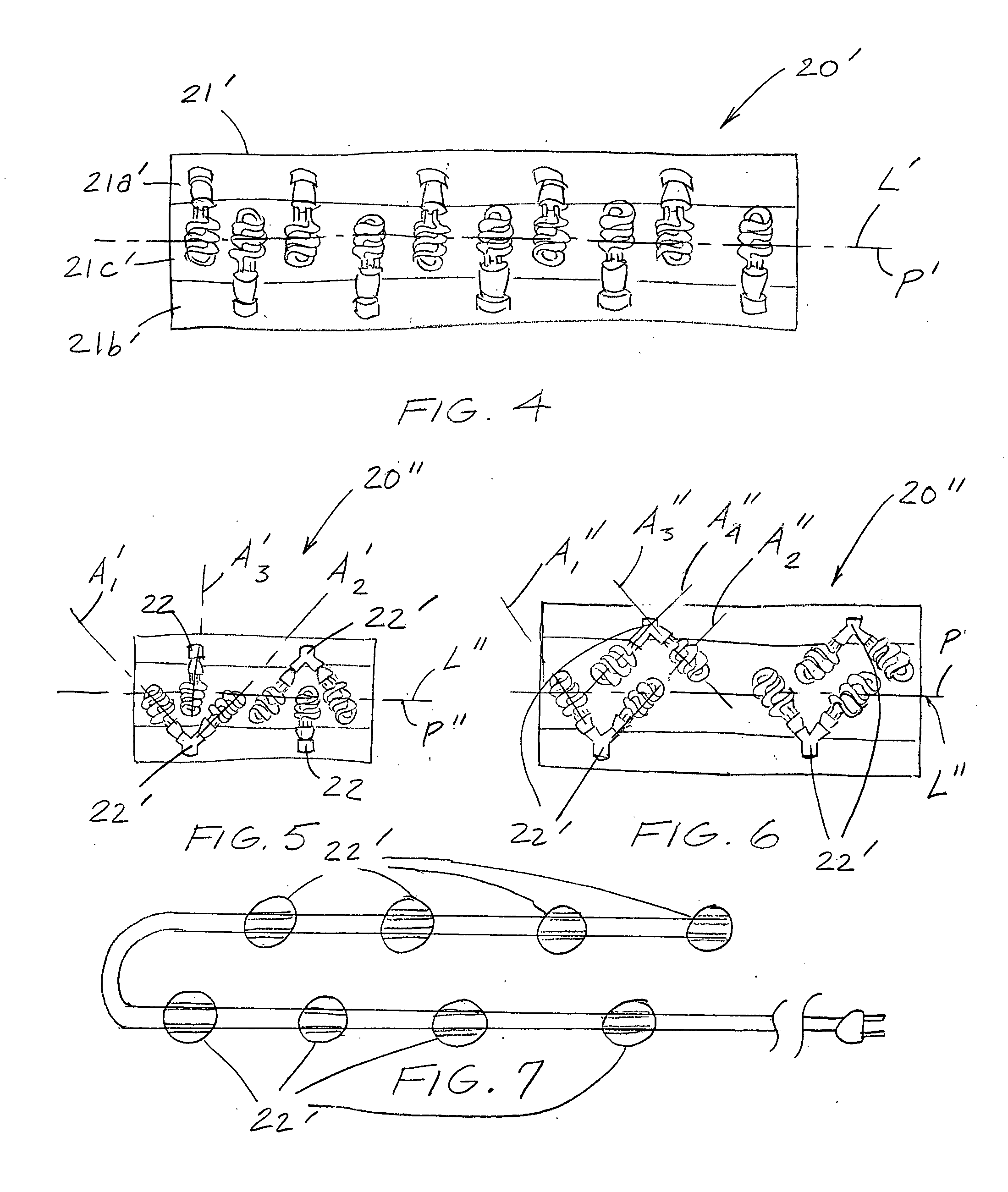High intensity light arrangement and method
a high-intensity, light-emitting technology, applied in the field of light-emitting arrangement, can solve the problems of inability to dim incandescent bulbs, inability to dim fluorescent bulbs, and inability to achieve uniform and high-intensity light-emitting effects
- Summary
- Abstract
- Description
- Claims
- Application Information
AI Technical Summary
Benefits of technology
Problems solved by technology
Method used
Image
Examples
Embodiment Construction
[0023] Referring now to the figures, and in particular FIG. 1, a conventional compact fluorescent light element is shown at 10. Light element 10 includes a screw base 1, a ballast housing 2 and a spiral light emitting portion 3 (which is also sometimes of a shape other than spiral, and which is not depicted, yet also equally suitable for use in connection with the disclosed invention), all arranged sequentially in a direction of an orientation axis A and disposed in respective axial positions therealong.
[0024] Turning to FIGS. 2 and 3, an embodiment of a light arrangement is shown, generally designated 20. Light arrangement 20 is provided as a combination of elements including a housing 21, light sockets 22 and light elements 10 received therein. Housing 21 is conveniently constructed of a rigid material, for example, bent sheet steel, of similar construction, for example, as standard shop fixture reflectors. Housing 21 is advantageously bent to form a generally trapezoidal shape i...
PUM
 Login to View More
Login to View More Abstract
Description
Claims
Application Information
 Login to View More
Login to View More - R&D
- Intellectual Property
- Life Sciences
- Materials
- Tech Scout
- Unparalleled Data Quality
- Higher Quality Content
- 60% Fewer Hallucinations
Browse by: Latest US Patents, China's latest patents, Technical Efficacy Thesaurus, Application Domain, Technology Topic, Popular Technical Reports.
© 2025 PatSnap. All rights reserved.Legal|Privacy policy|Modern Slavery Act Transparency Statement|Sitemap|About US| Contact US: help@patsnap.com



